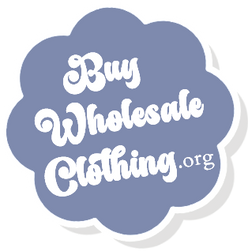Top Ten Wholesale Business Terms to Know
No matter where you are on your fashion boutique journey, knowing and understanding essential wholesale terms will be key to your success. From net payment terms to inventory turnover, the industry is packed with terms and acronyms that can be overwhelming—especially when making important buying decisions or business goals.
This blog will break down the top must-know terms of the wholesale business to help build your confidence around building and managing a successful boutique. It will also address key operational terms and the "how-to" for measurements like cost of goods and profit margin to optimize business growth. So, let’s get to it!
Essential Wholesale and Business Terms
Minimum Order Quantity – MOQ refers to the smallest number of units of a product that a manufacturer is willing to sell, or a minimum quantity of a specific product SKU (stock keeping unit). An example is Bloom Wholesale who offers women's fashion in minimum packs that contain several pieces of one garment broken out by various sizes.
Inventory Turnover Rate – The number of times inventory is sold and replaced within a given period. A higher turnover rate means products are moving quickly! Check out this short video on inventory turnover and how to calculate it:
Drop Shipping – A retail fulfillment method where a store doesn’t keep products in stock but instead utilizes the products offered and stored at the place of the drop shipper. Once a sale is made, the drop shipper fulfills the customer order and facilitates the shipping. To learn more, see our blog on USA Dropshipping Suppliers and Vendors.
Prepack – A wholesale order that includes a predetermined mix of sizes, styles, or colors, rather than allowing retailers to select individual units. Faire is an example of a wholesaler that packages products together for a boutique, supplier or retailer. 
Net Terms – Net terms are the deferred payment options that create delayed deadlines before an invoice payment is due. When your accountant talks about net terms, they’re most likely referring to one of three types:
Net 15/30/60/90 represents the time before the invoice is due. So, for example, Net 15 means that the deadline is 15 days after the invoice is sent, and so on.
Discount terms are net terms on which the business will provide an early payment discount if the invoice is paid before the deadline.
End-of-month terms indicate that payment is due after a set number of days once the calendar month ends.
The bottom line is that any net term can impact your business’s available cash flow. So, when clients miss an invoice date, it can create cash flow problems and affect your ability to pay employees, expenses and supplies that are crucial to your everyday operations.
Essential Business Operational Terms
We now turn to operational terms that are imperative for business owners to understand. They can be seen as core business practices that will make the difference between succeeding or failing. For example, being able to identify profit margins or identifying poor inventory sell-through. Read on for the top operational terms you should know.
Gross Margin Return on Investment – GMROI The gross margin return on investment or an inventory profitability evaluation ratio that shows the ability to turn inventory into cash above the cost of the inventory. It is calculated by dividing the gross margin by the average inventory cost and is used often in the retail industry.
Cost of Goods Sold – COGS is the total cost a business has paid out of pocket to sell a product or service. It is the amount that the business must recover when selling an item to break even before bringing in a profit. Calculating the cost of goods sold is essential to know whether your business is making a profit and should be tracked monthly.
Sell-Through Rate – Inventory sell-through measures the amount of inventory a retailer sells in relation to the amount they purchased from a manufacturer. Retailers calculate sell-through rates to estimate how quickly they can sell a product and convert their initial investment into revenue.
Profit Margin – Margin is the difference between the cost of a product and its selling price. Higher margins = better profitability! A margin calculator will be your best friend if you want to find out an item's revenue. In general, profit margin determines how healthy your company is. With low margins, you're dancing on thin ice and any change for the worse may result in big trouble. High profit margins mean there's a lot of room for errors and bad luck.
Net Profit vs. Gross Profit – Gross profit is revenue minus COGS, while net profit is what’s left after deducting all expenses. Gross profit can be calculated by subtracting the business's cost of goods sold from the total revenue, while Net profit refers to a business's total revenue after subtracting expenses such as payroll taxes, rent, utilities and labor. Net profit is the gross profit minus all other expenses, or net income.
Running a successful retail boutique, whether you’re a brick-and-mortar or an online store, requires business savvy. Knowledge on how to successfully buy, sell and conduct various forms of financial analysis is essential. Having your own business can be highly gratifying, but understanding the wholesale and retail “lingo” is just as important as knowing current fashion trends. We hope this blog inspired you to learn more about the business terms and tools that can help you shop, sell and create a business like the pros!
